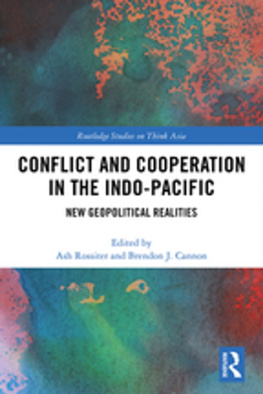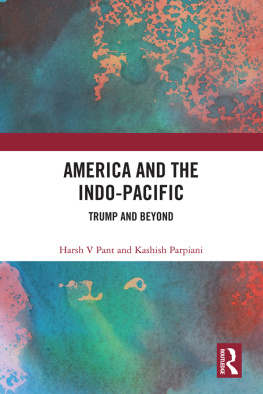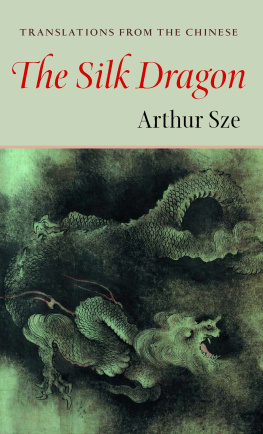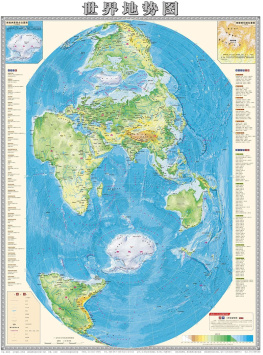Tracing the Undersea Dragon
This book is a comprehensive study of the development of Chinas nuclear-powered ballistic missile submarines (SSBNs). It offers insights into the secretive world of nuclear submarines and ballistic missiles of the Chinese (PLA) Navy and studies how these are likely to grow in the next two decades.
The volume examines the technological origins of the design and development of Chinese nuclear submarines, ballistic missiles, and their naval construction capabilities. It provides an analysis of the underlying Chinese nuclear doctrine, Chinas maritime geographical constraints for submarine operations, and the credibility of its sea-based deterrence. It draws upon strategy, nuclear policy, technology, geography, and operational considerations to holistically predict the likely SSBN force levels of the PLA Navy for various scenarios. The book also assesses the spectrum of threats likely from the undersea domain for India and other nations in the Indo-Pacific region.
A key text on an obscure but vital facet of Chinese defence studies, this book will be useful for scholars and researchers of strategic affairs, international relations and disarmament studies, peace and conflict studies, geopolitics, foreign policy, Indo-Pacific studies, and diplomacy.
Amit Ray is a Captain serving in the Indian Navy and a Naval Architect by specialisation. He has been involved in repairs, construction, design, and trials of a variety of submarines for over two decades. His academic qualifications include M.Tech. (ocean engineering and naval architecture) from IIT Kharagpur, M.Phil. (defence and strategic studies) from Mumbai University, and Ph.D. (submarine hydrodynamics) from IIT Delhi, India. He has authored more than 30 technical papers. His awards include the Directors Gold Medal of IIT Kharagpur, India (2006) and Medal of Distinction from the Royal Institution of Naval Architects, UK (2010).
First published 2022
by Routledge
2 Park Square, Milton Park, Abingdon, Oxon OX14 4RN
and by Routledge
605 Third Avenue, New York, NY 10158
Routledge is an imprint of the Taylor & Francis Group, an informa business
2022 Amit Ray
The right of Amit Ray to be identified as author of this work has been asserted by him in accordance with sections 77 and 78 of the Copyright, Designs and Patents Act 1988.
All rights reserved. No part of this book may be reprinted or reproduced or utilised in any form or by any electronic, mechanical, or other means, now known or hereafter invented, including photocopying and recording, or in any information storage or retrieval system, without permission in writing from the publishers.
Trademark notice: Product or corporate names may be trademarks or registered trademarks, and are used only for identification and explanation without intent to infringe.
British Library Cataloguing-in-Publication Data
A catalogue record for this book is available from the British Library
Library of Congress Cataloging-in-Publication Data
Names: Ray, Amit, 1976-author.
Title: Tracing the undersea dragon: Chinese SSBN programme and the Indo-Pacific / Amit Ray.
Other titles: Chinese SSBN programme and the Indo-Pacific
Description: Abingdon, Oxon; New York: Routledge, 2022. | Includes bibliographical references and index. | Identifiers: LCCN 2021007724 (print) | LCCN 2021007725 (ebook) | ISBN 9780367612641 (hardback) | ISBN 9781032052144 (paperback) | ISBN 9781003104896 (ebook)
Subjects: LCSH: Nuclear submarines--China--History. | China. Zhongguo ren min jie fang jun. Hai jun--Submarine forces--History | Ballistic missiles--China--History. | China--Military policy. | Sea-power--China.
Indo-Pacific Region--Strategic aspects.
Classification: LCC V859.C6 R39 2022 (print) | LCC V859.C6 (ebook) | DDC 359.9/38340951--dc23
LC record available at https://lccn.loc.gov/2021007724
LC ebook record available at https://lccn.loc.gov/2021007725
ISBN: 978-0-367-61264-1 (hbk)
ISBN: 978-1-032-05214-4 (pbk)
ISBN: 978-1-003-10489-6 (ebk)
Typeset in Sabon
by SPi Global, India
For Indian Submariners: Operators, Maintainers, Builders, and Designers
Submarines fascinate me. The combination of extremes of technology, adventure (risk!), and lethal potential has captivated the imaginations of submariners, navies, and laymen worldwide for more than a century. Tales are woven around their enigma, theses are spun around their utility, and the thirst for improving their technology continues unabated.
The fusion of nuclear propulsion with the submarine more than six decades ago bestowed this potent platform with high submerged endurance and high speed. Within a decade of the first nuclear submarine diving below the ocean surface, they were integrated further with the deadliest weapons created by man: nuclear warheads on intercontinental ballistic missiles. There are nine nations in the world today with nuclear weapons, and all of them have access to the sea. Six of them have been able to build SSBNs. The technological complexities (and substantial investments) involved in designing, fabricating, outfitting, and deploying SSBNs make them prohibitive to all but this handful of nations.
For India, Chinas proximity has been perceived as a threat in popular imagination ever since the Sino-Indian war of 1962. Starting with anti-piracy patrols in the Arabian Sea in December 2008, the PLA Navy established its first overseas base in Djibouti in August 2017. Of greater concern (to the Indian Navy) are patrols by PLA Navy submarines in the Indian Ocean. The PLA Navy is not only the largest Navy in the world, but also has the numerically largest fleet of submarines in the world today (not counting North Koreas mini-submarines).
Any weapon system or capability is considered stabilising by those who have it but as destabilising if others aspire for the same. Such dichotomies and paradoxes abound at various strategic levels. China professes its nuclear weapons capability to be purely defensive and dissuasive, but the US finds its lack of transparency as worrisome. The US worries about the offensive intentions of the Chinese deterrence and questions the reliability of its oft-stated No First Use (NFU) policy, while openly justifying its own first use option, in spite of having a preponderance of forces. A nuclear-weapons-free world remains but a dream in the foreseeable future. Consequently, strategic deterrence is likely to remain an essential element of Indias national defence.
In this milieu of aspiring and great powers, potential clashes of maritime interests in the Indian Ocean, and nuclear weapons on submarines, the core question this book tries to examine is: Where is Chinas SSBN programme today, and where is it heading? We will attempt to predict their force levels over the next two decades (till 2040), an ambitious, perhaps foolhardy, attempt considering that we are not sure of even the existing numbers.
How can this study hope to shed additional light on such opaque features? The answer lies in attempting to examine the issue from the Chinese perspective but not just from political, military, or nuclear strategy discussions. In addition to these aspects, we shall try to put together a composite picture supported by an appreciation of the technical challenges of SSBN design and construction, their operating philosophy, and Chinas geographical constraints. It is hoped that this attempt to trace these aspects of the undersea threat from Chinese SSBNs will lead to a better understanding of their impact on the Indo-Pacific region over the next two decades.
A few clarifications on nomenclature are in order. The terminology of Chinese submarines is somewhat confusing. The Type designation (091, 092, etc.) is used throughout the book for each class of submarine. An easy way I find to remember these designations are that the odd numbers (091, 093, 095) are the SSN classes, and the even numbers (092, 094, and 096) are the SSBNs. This designation initially denoted individual boats, hence Type 09-1 referred to the first Chinese SSN, which was named No. 401 when it joined the PLAN fleet. On the same lines, this text uses Type 094-1 to denote the first boat of the Type 094 class, etc. The names of












